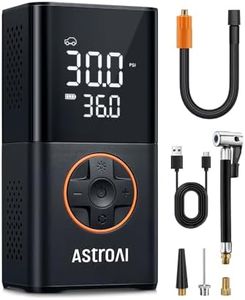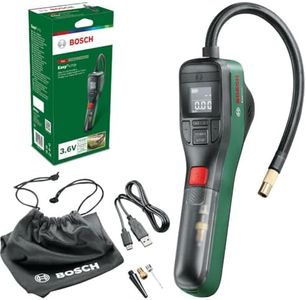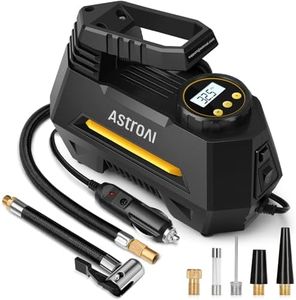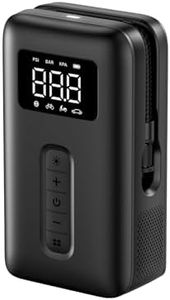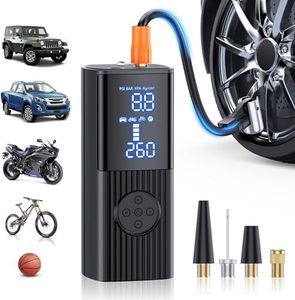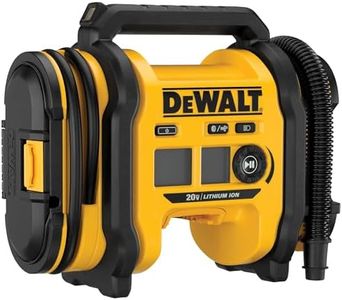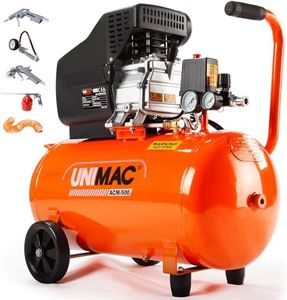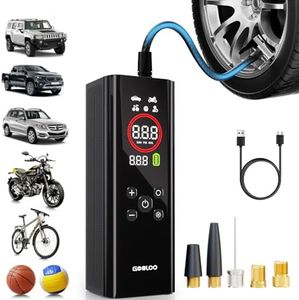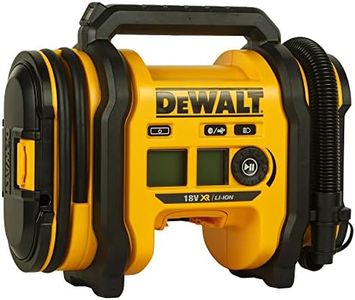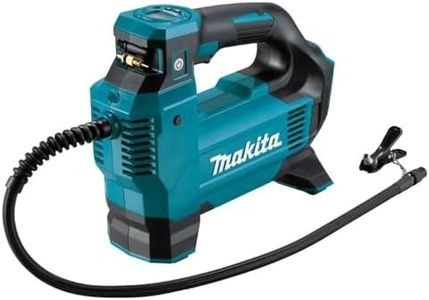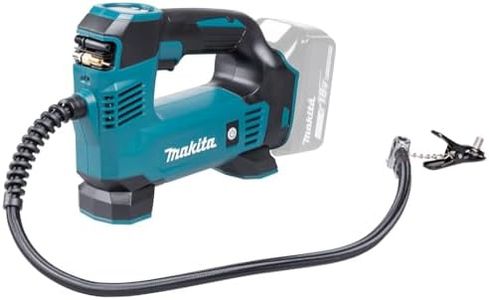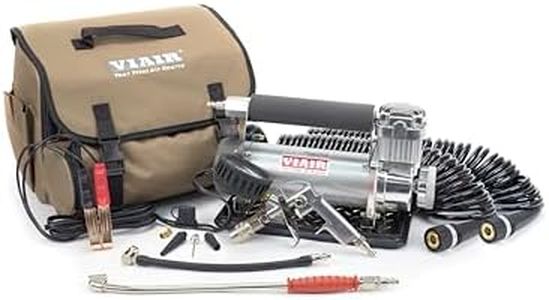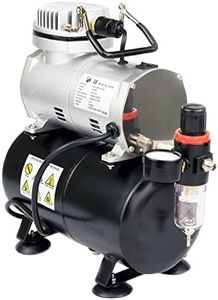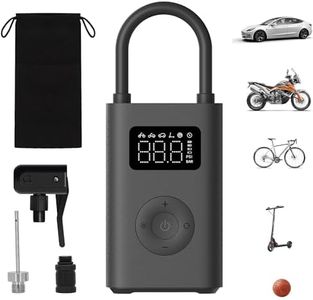We Use CookiesWe use cookies to enhance the security, performance,
functionality and for analytical and promotional activities. By continuing to browse this site you
are agreeing to our privacy policy
10 Best Portable Air Compressor
From leading brands and best sellers available on the web.Buying Guide for the Best Portable Air Compressor
Choosing a portable air compressor means thinking about where and how you’ll use it most. These devices are handy for inflating tires, powering air tools, or even for small painting jobs. Before buying, consider the key factors that impact how effective and convenient your air compressor will be for your needs.Tank SizeTank size refers to how much compressed air the unit can store, usually measured in gallons or liters. It matters because a larger tank can power tools for longer periods without the motor having to run constantly. Small tanks (1-3 gallons) are best for quick jobs like inflating tires or sports equipment. Medium tanks (3-6 gallons) are good for basic tools, while large tanks (6+ gallons) support more demanding use like stapling or painting. If you plan on short, occasional tasks, a smaller tank keeps things light and easier to carry. If you need more continuous air, aim for a larger tank.
Maximum PSI (Pounds Per Square Inch)PSI measures the pressure the compressor can deliver. This is important because different tools and tasks need different pressures. Basic inflation jobs may only need 30-40 PSI, while some air tools might require 90 PSI or more. Check the requirements for what you want to use, and pick a compressor that offers a bit more PSI than your highest-need tool to avoid performance issues.
CFM (Cubic Feet per Minute)CFM tells you how much air the compressor can deliver at a certain pressure. Higher CFM means the compressor can power bigger tools or run tools for longer before needing a break. For inflating, a lower CFM (under 2 CFM) is enough. For things like brad nailers or staplers, you'll want around 2-4 CFM. For paint sprayers or impact wrenches, look for 5 or more. Match this to what you’ll use most often; overestimating just adds unnecessary size and weight.
PortabilityPortability includes the size, weight, and handle design of the compressor. This spec matters if you’ll move it between locations or need it to fit in a trunk or storage space. Lightweight, slim designs with sturdy handles are easiest to move, ideal if you plan on using it in different places. If it will mostly stay put, you can worry less about this and focus more on capacity.
Power SourceAir compressors can be powered by electricity (plug-in or battery) or gasoline. Electric models are best for indoor or residential use; plug-ins tend to be more powerful, while battery models are more mobile but may have shorter run times. Gasoline models are good for places without electricity, like outdoor or construction jobs. Think about where you’ll use your compressor to decide which type of power source makes sense.
Noise LevelNoise level, measured in decibels (dB), affects how comfortable it is to use the compressor, especially indoors or in quiet neighborhoods. Some models are much quieter than others. If you’ll use it near people or indoors, look for a noise rating under 70 dB for a more pleasant experience. For outdoor or short, occasional jobs, noise may be less of a concern.
